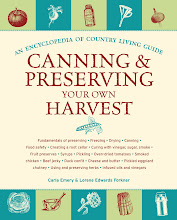Recently, the FDA has called in researchers to scrutinize the link between common artificial food dyes and hyperactivity in children. The long-held belief that these dyes pose no threat to our bodies is being questioned, and so there is no better time to set our minds at ease and learn how to dye our foods ourselves using the vibrant colors found in nature.
Dye: Homemade colorings from herbs and other food products are more soft and subtle than artificial ones. Here's what you can use to make different colors:
• Black: barberry leaves
• Blue: blueberries
• Brown: nut hulls (walnuts are best), tea, coffee, rose hips, tobacco, hickory chips
• Green: beet tops, sunflower seeds, birch leaves, Spanish onion skins (outer leaves only), elderberry leaves, spinach, cabbage, rhubarb leaves
• Orange: orange juice
• Pink: cherries; beet and sassafras roots
• Purple: blackberries, cherries, huckleberries, cranberries, raspberries, grapes, purple cabbage
• Red: red onion skins, bloodroot, fresh beet juice, madder root, and logwood
• Yellow: the stem, leaves, and flowers of apple bark; barberry stems and roots; cinnamon; curry; ginger; the stems, leaves, and flowers of goldenrod; hickory bark; mustard; paprika; pear leaves; saffron; tanglewood stems; turmeric
Natural Food Coloring. For a brown color, use a little browned flour, a little burnt sugar, or caramel. Pounded, uncooked spinach leaves make a rich green. Adding some spinach leaf puree makes a lovely deeper green. This green can also be used to tint icings, desserts, etc. Another way to make a cooked-spinach green coloring is by washing some spinach, boiling it until tender, and pouring off the juice for your coloring extract. For a stronger green, let the spinach cool, squeeze dry, mash by pounding, and then put through a sieve. Cooked green peas make a lighter shade of green; split pea soup makes a very pale green color. The coral of a lobster pounded and put through a sieve yields red, as does vinegar or water that has stood on sliced boiled beets.
Take the guesswork out of food dyeing with this helpful chart:
Color Blending Chart. Commercial vegetable colorings can be varied like this:
• 2 drops yellow, 1 drop green, and 1 drop red = blue
• 1 drop red, 2 drops green, and 1 drop blue = gray
• 2 drops blue + 1 drop green = dark green
• 3 drops yellow + 1 drop blue = light green
• 12 drops yellow and 1 drop green = olive
• 2 drops red + 1 drop blue = orchid
• 3 drops red + 1 drop yellow = orange
• 3 drops red, 4 drops yellow, and 1 drop green = tangerine








No comments:
Post a Comment